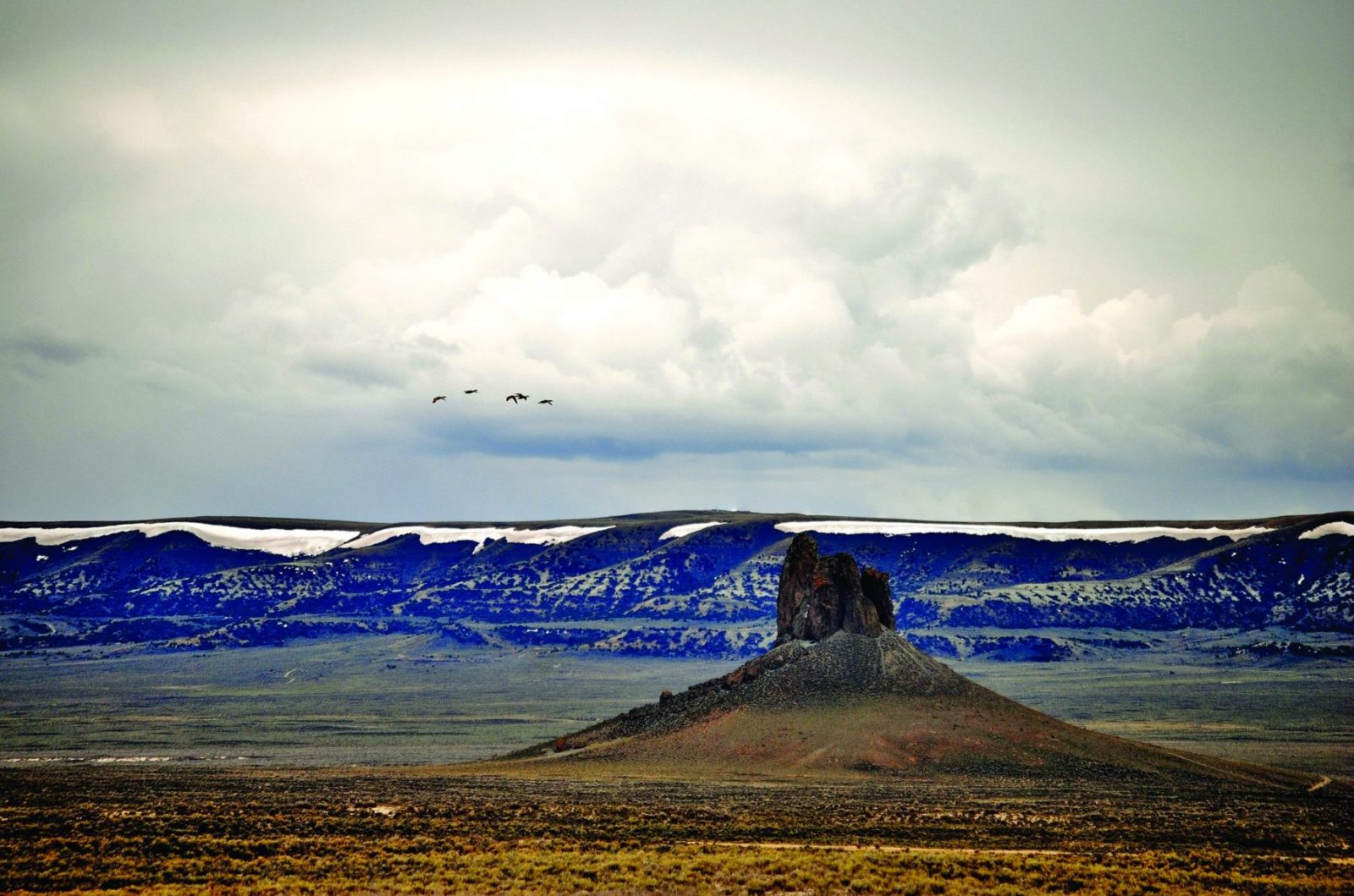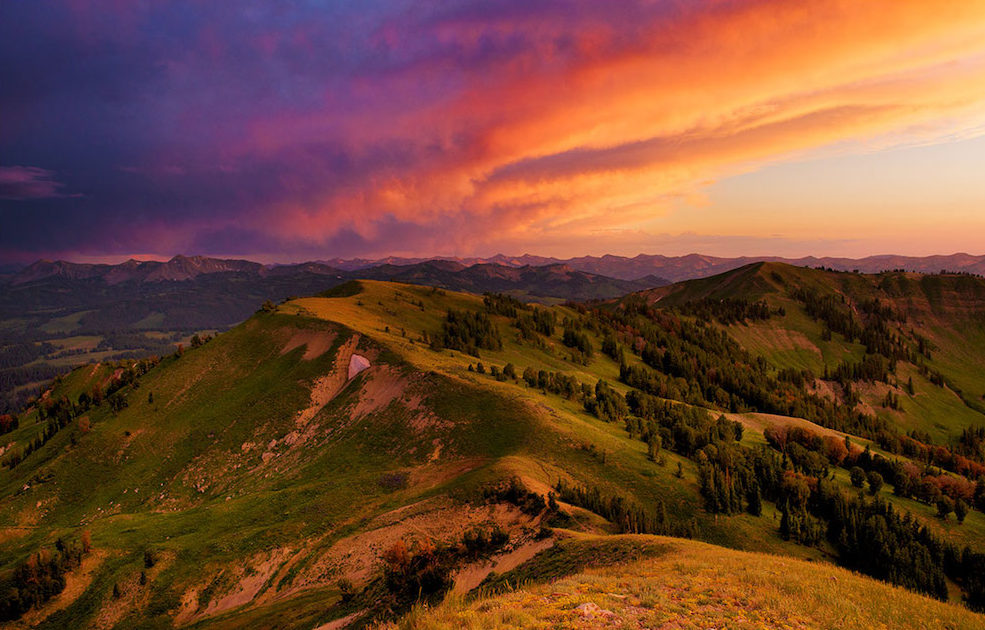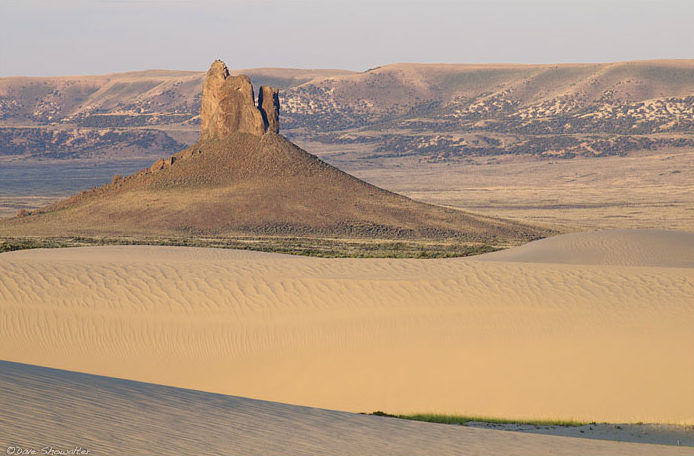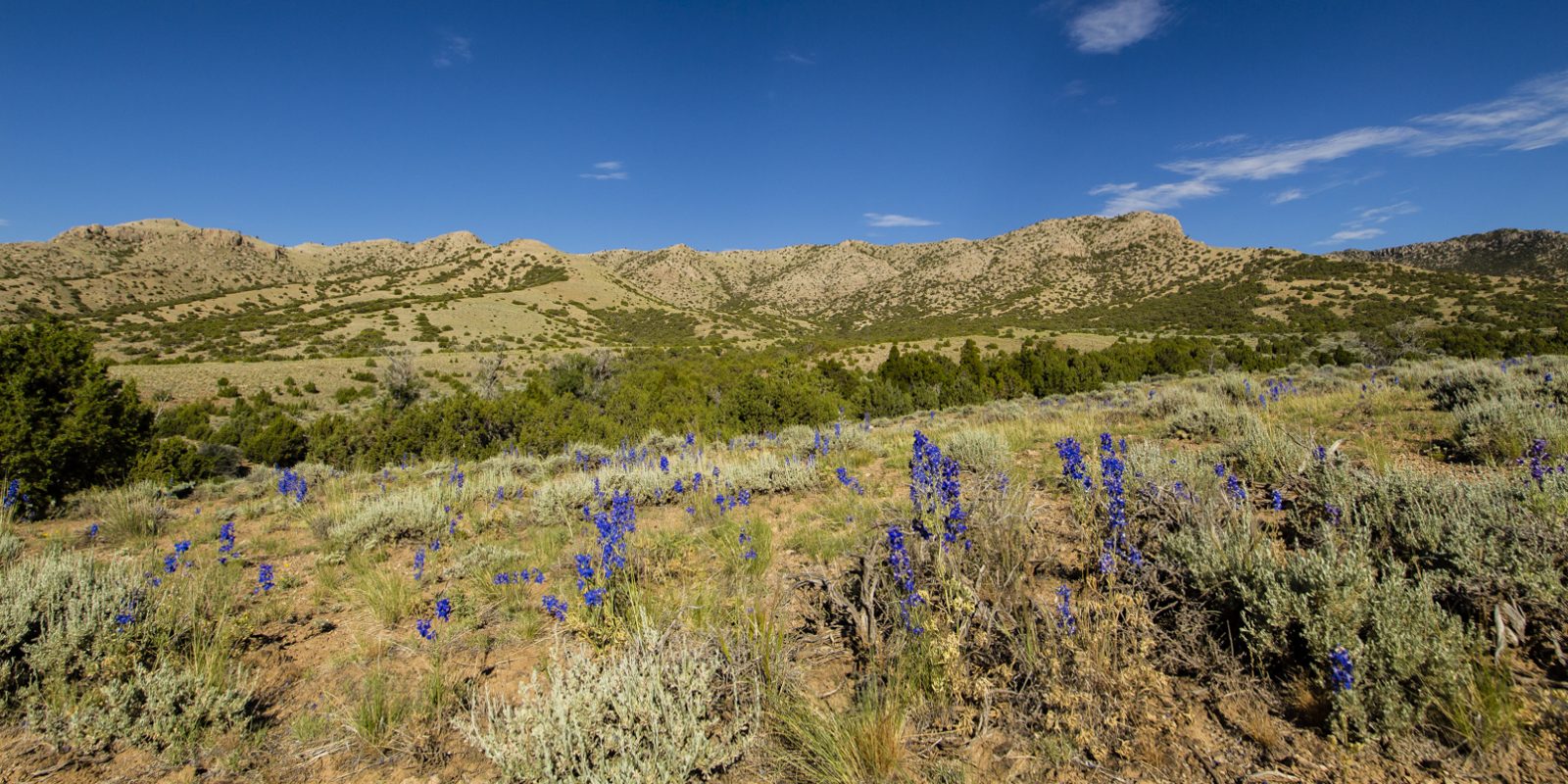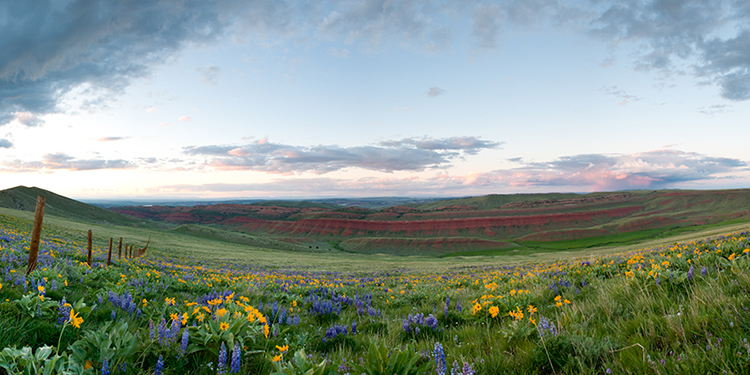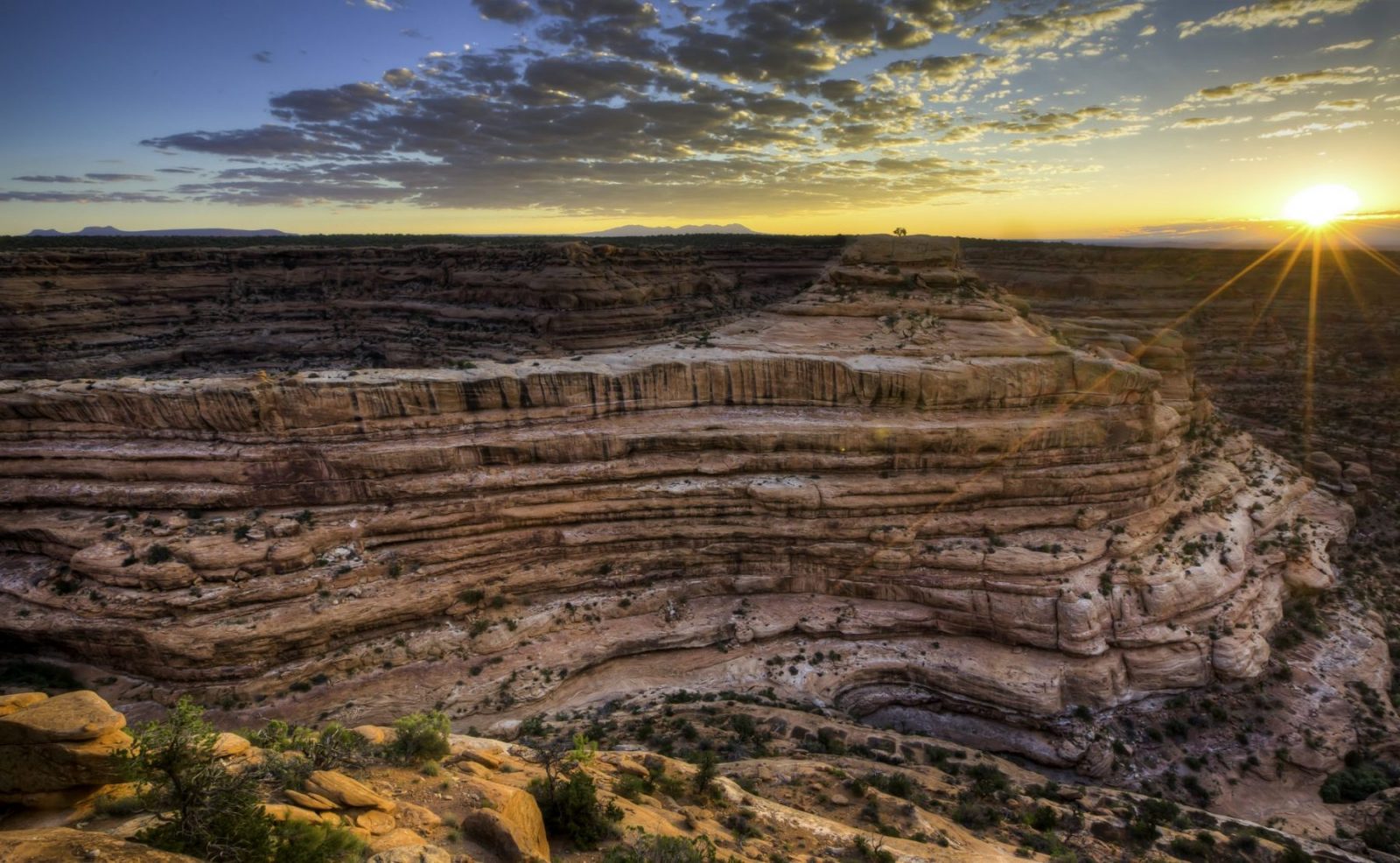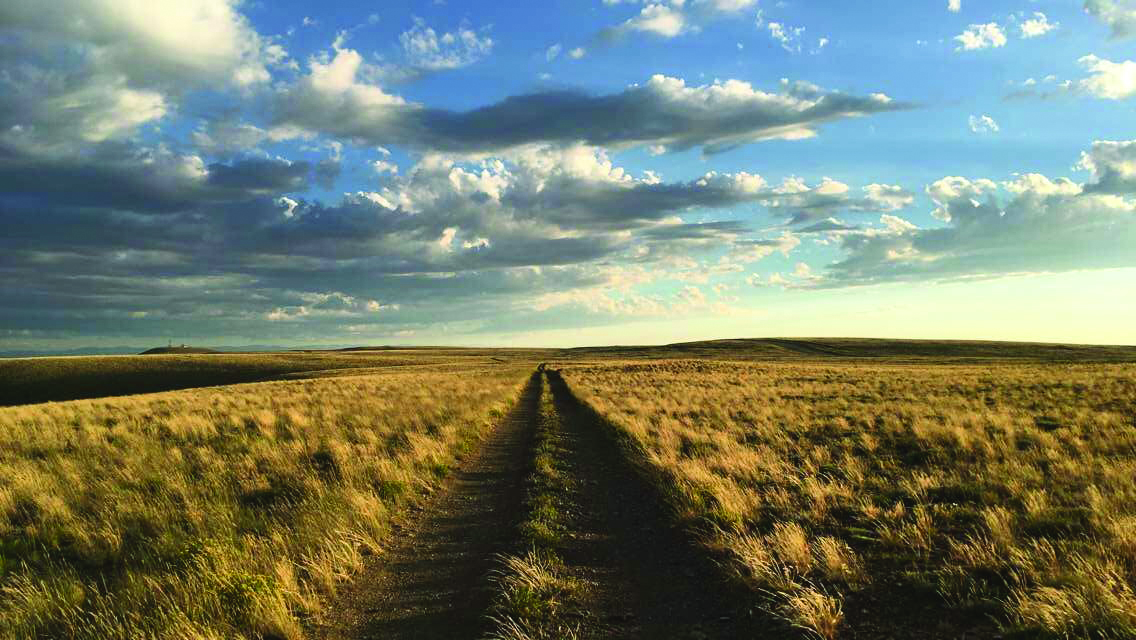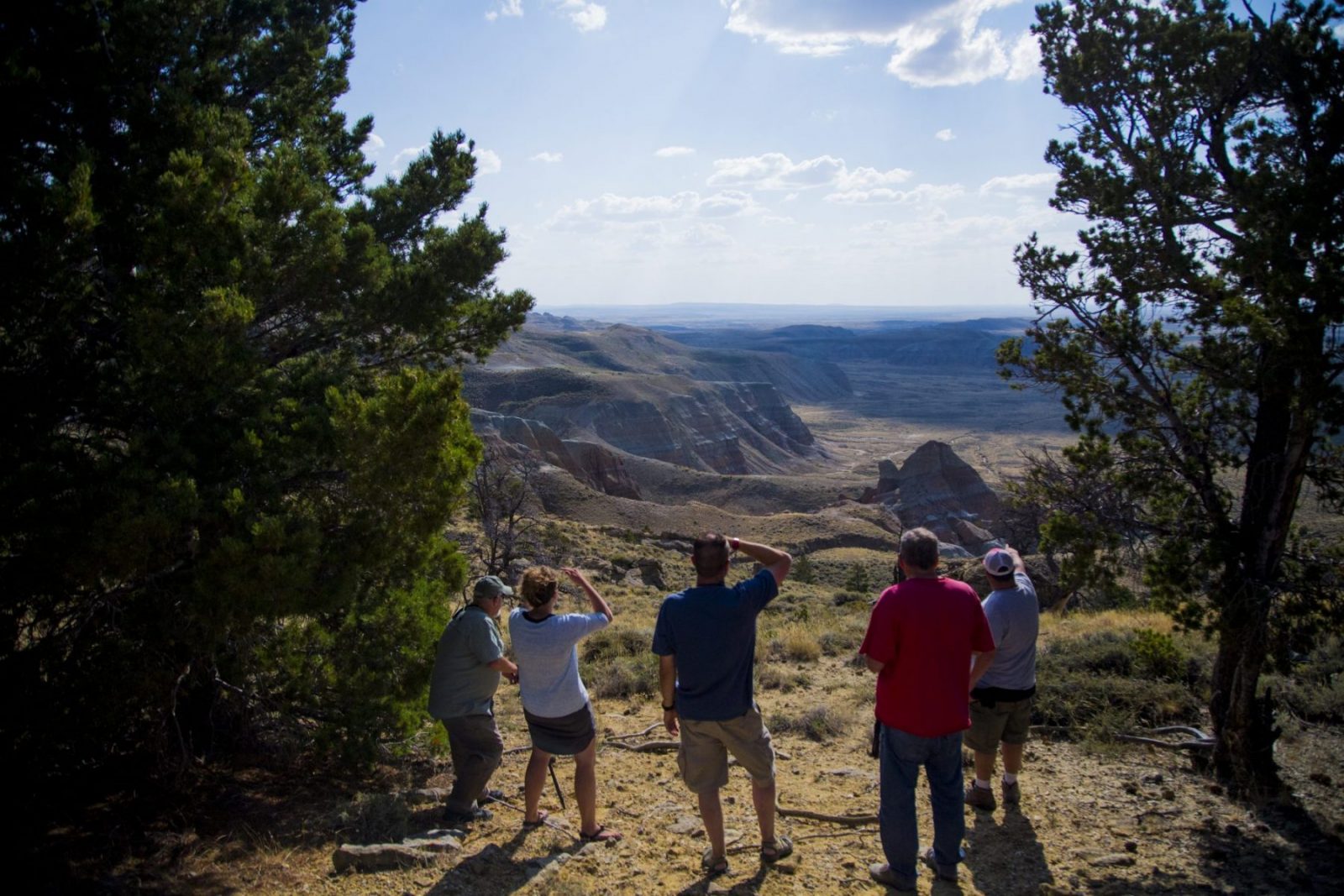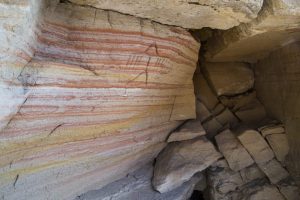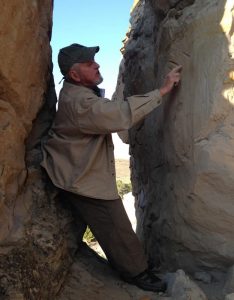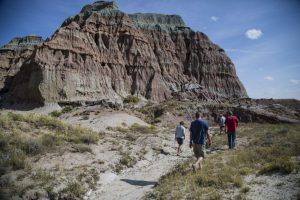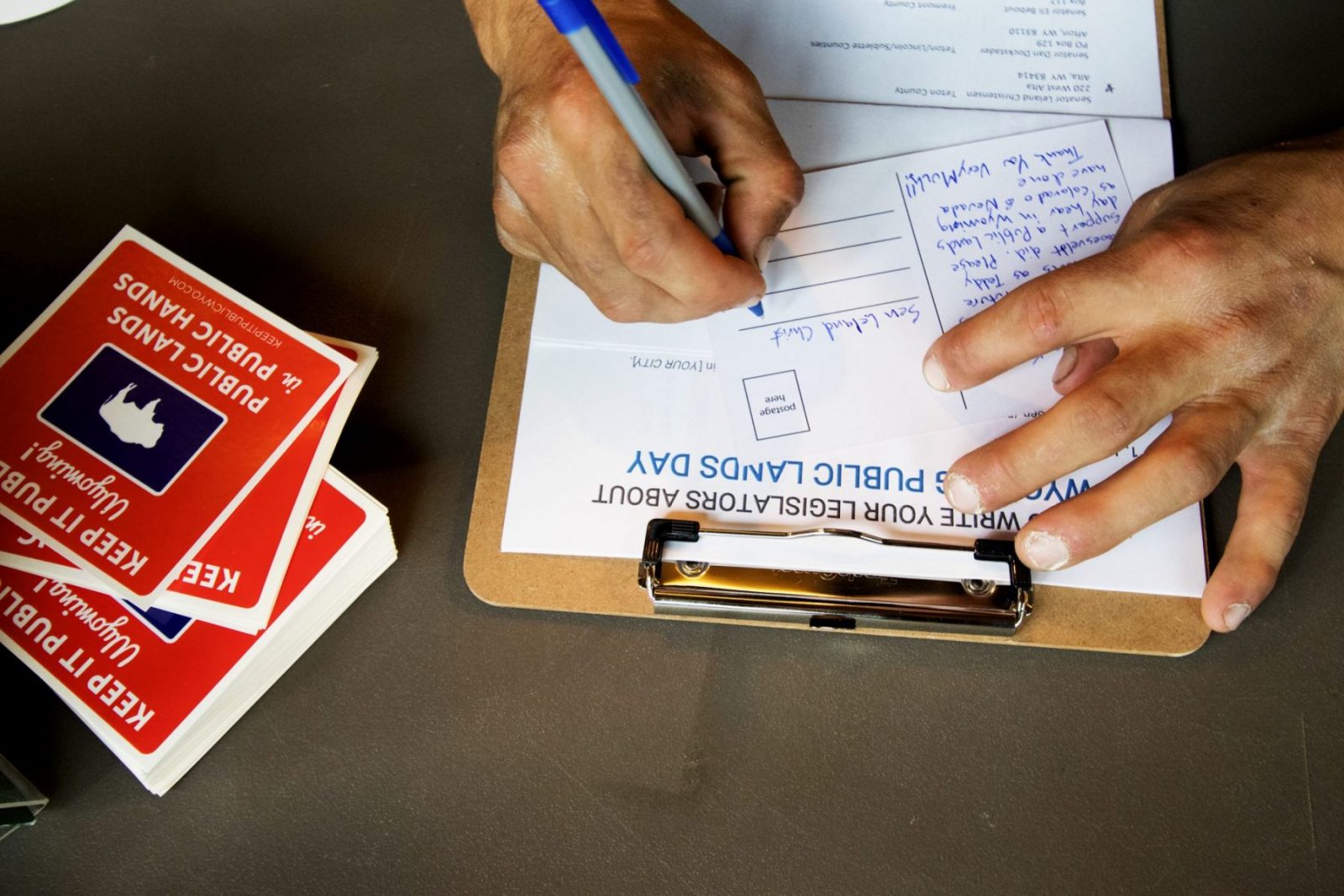[et_pb_section fb_built=”1″ admin_label=”section” _builder_version=”3.0.47″][et_pb_row admin_label=”row” _builder_version=”3.0.48″ background_size=”initial” background_position=”top_left” background_repeat=”repeat”][et_pb_column type=”4_4″ _builder_version=”3.0.47″ parallax=”off” parallax_method=”on”][et_pb_text admin_label=”Text” _builder_version=”3.0.74″ background_size=”initial” background_position=”top_left” background_repeat=”repeat”]
Ian Cadena’s photograph of Wyoming’s iconic Boar’s Tusk — moody, blue, and cold — portrays with authenticity the austereness of this unique high-altitude desert. When thinking of deserts, many might imagine a sea of hot, barren, sun-bathed sand. Wyoming’s Red Desert is proof of a vivid diversity, though, that many have never experienced — geologically, biologically, culturally, and historically.
This diversity provides stunning scenes, which is what Cadena found when he snapped the photo that graces February’s page of our 2018 calendar.
“It was early in the year,” he recalled of the time he decided to take a drive out to the Red Desert with his camera. At the time, it had been a place that Cadena, who lives in nearby Rock Springs used to bring his kids to partake in the quintessential summer pastime of rolling down the massive dunes that make up the Killpecker Sand Dunes complex. But on that day, it was cold and there was snow on the ground. “And there was something about the scene that day — the contrast between the snow in the background and the sand in the foreground. The solemn column of the Boar’s Tusk protruding out of the land. The snatch of birds in flight. It just seemed unreal.”
Cadena took only a few shots that day when he usually takes hundreds, he said — and one of those would be the winner, chosen as a distinct perspective of the desert that we often don’t see.
And recently, that’s become a personal mission for Cadena. Through sharing his photography on Instagram (@ianrs307), he wants to inspire people to get outside and explore, especially in Wyoming. Already, he’s had numerous people contact him to ask where all of the incredible places he photographs are. For many, he can proudly say: right in your own backyard.
“In Wyoming, we are so blessed and lucky to have everything around us that we do,” Cadena said. “You go to Colorado and all you see is private property. And it’s crowded, too. In Wyoming, you can go most places — the Winds, the Wyoming Range, the Red Desert — and not run into anyone. I tell people, ‘just get outside, get in your car, take a drive. With technology these days, you can find your way. And even if you do get lost, it’s really not a bad thing.”
Cadena’s personal story that brought him to the Red Desert and photography is strikingly similar to the Outdoor Council’s founder, the late Tom Bell. Both Cadena and Bell found a certain sense of solace in Wyoming’s wide open spaces, particularly in the Red Desert: Bell, when he returned from World War II as a decorated veteran, and Cadena, when he sought nature and photography to fill a sudden void left when he separated from his wife. Although some 50 years apart, both men reached the same conclusion after spending long, meaningful days rambling in Wyoming’s outdoors: we need to protect this for future generations.
Recently, a friend called Cadena about the image he took back that appears in the calendar. “He said that they were planning on drilling there,” Cadena said. “And all I could think was, ‘I hope not.’ And then, ‘I hope there is something we can do.’ Because while I’m all for progress, I also believe that there are certain areas that should not be disturbed. It would be such a shame to drill in such a special area.”
The contrast that Cadena captured seems fitting of the the Red Desert — where there’s a continual game of defense against pressure to development these public lands. Industrial development starkly contradicts the natural beauty and profound resources this landscape offers to myriad species of wildlife, to plant ecosystems, and to local residents and Wyoming visitors alike.
“I encourage people to get outside all the time so they can realize how much we have here in Wyoming,” Cadena said.” I keep hearing stories about the government turning land back to the state, and to see what we could possibly lose, it breaks my heart. And if we don’t do something to counter that, our kids won’t get to enjoy these things. I didn’t get into hunting, fishing and camping until I was 25, and it was an eye-opener. It was a new life. I’ll be forever grateful to my father-in-law who showed me these places, and I’ll pass this along to whoever I can. Get out and enjoy this while we can. And speak up — we have to protect what we have.”
Join Cadena and other photographers by submitting your own shot of Wyoming for the Outdoor Council’s 2019 Calendar Contest. You can enter your photos via Instagram or email. To submit your photo(s) via Instagram, you must have a public Instagram account so that we’re able to view your submission. Upload your photo(s) and add the hashtag #MyWyoming.
To submit your photo(s) via email, send your photo(s) to claire@wyomingoutdoorcouncil.org.
For more information about the contest, visit our Calendar Contest page.
[/et_pb_text][/et_pb_column][/et_pb_row][/et_pb_section]


